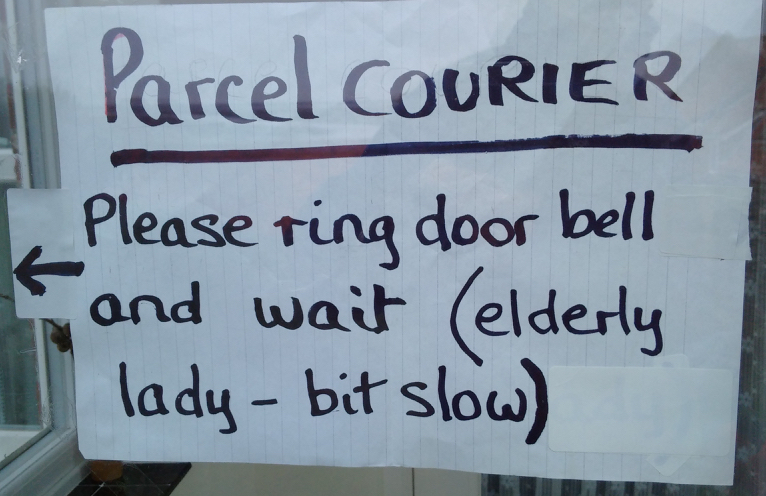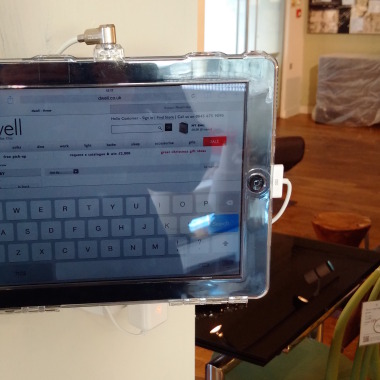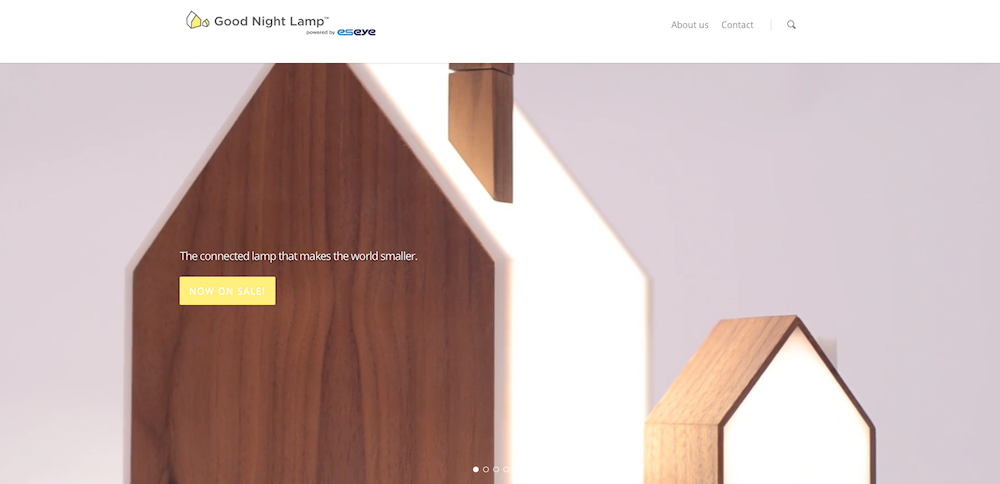
The experience, the whole experience & nothing but the experience
I was walking through my village the other day and spotted this sign taped to the inside of a neighbour’s front door. It read: ‘Parcel courier – please ring bell and wait (elderly lady – bit slow)’.
Think about that. Think about the whole chain of user experience which had caused this self-labelled ‘elderly lady’ to hand-write this sign and stick it to her front door.
Do you think the existence of this sign was ever considered by the user experience designer who created the digital service through which her parcel had been ordered?
Unlikely, but let’s say they did consider it: who within their organisation would have been empowered to do something about it? Could they, as the designer of that digital service, affect changes to the type of courier used or how long they waited? Could they have chosen to work with a courier which had a fallback option of delivering to the local Post Office – a trusted and familiar place for many people in this demographic?
The organisational silos which exist in most companies would suggest they probably could not. The team responsible for delivery logistics is likely far removed from that which designs the so-called ‘customer facing’ front end. Yet, from the customer perspective, the point of delivery is just as much a ‘customer facing’ touchpoint as the app or web page through which they ordered.
There are, of course, changes which could be made to the digital elements of this customer’s experience which might help: including an option for a phone number to call if there is no answer at the door, for instance. Or providing detailed updates on delivery progress, so they know exactly when to expect the courier.
However, none of those will be actioned until the team responsible for designing those bits is able to put themselves in the place of customers like these. It might seem like a conceptual stretch – even a waste of budget – for management to send digital designers out into the field to see what happens on the doorstep, but until they start doing this kind of user research, they’ll never see the full context of the digital experiences they’re creating.
These kind of real life scenarios provide a reminder that however much the industry talks about multi-channel strategies, most of these conversations are still limited by a conceptual view which imagines channels to just be different types of digital devices.
The most significant aspects of a customer’s experience usually happen in the gaps between touchpoints – and the number of those gaps is increasing as the number of touchpoints multiplies. It highlights the need for user experience strategies which are truly user-centred, not just an excuse for fancy UI design or following transient technology trends, like the emergence of a new device type.
Basic, logical stuff – but so often forgotten – and the reason why our elderly neighbours are still sticking paper signs to their front doors.



Thanks for these observations Marek, I really enjoy reading them. It’s insights like these that really drive home how much work there is to be done in the world of multi-channel customer experiences. The key thing, as you say, is helping organisations to understand that it’s much more than just the digital aspect of an experience they need to focus on and encouraging them to take the time to actually look into how the whole experience works.